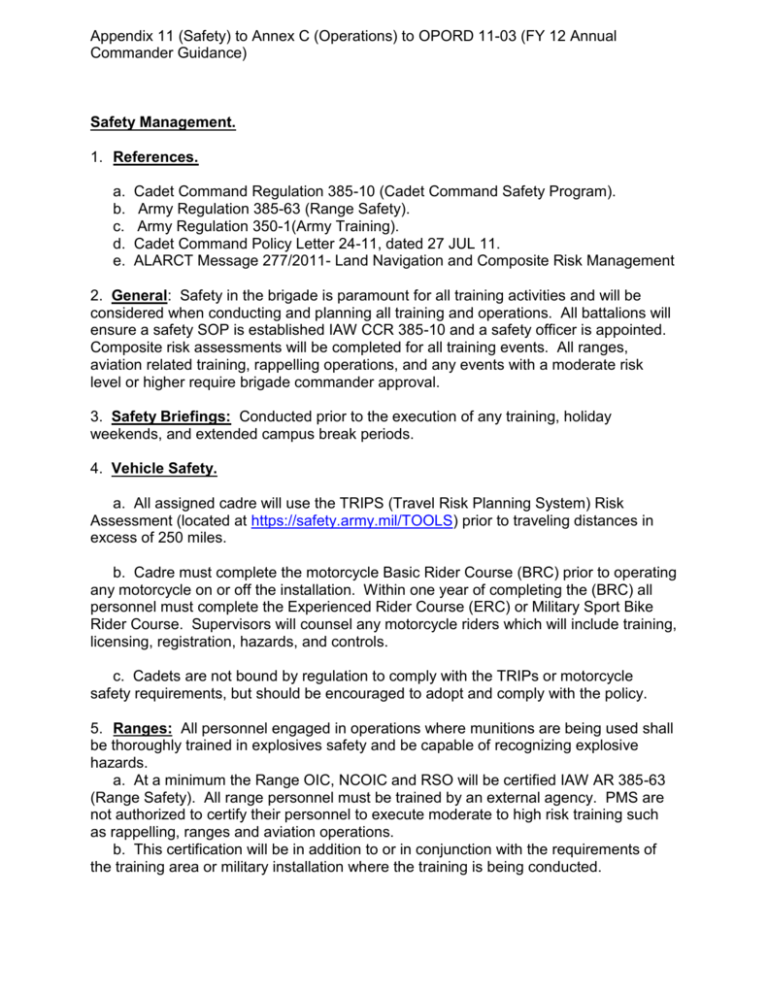Army Regulation 385-10 : What it is
The Army Regulation 385-10, also known as AR 385-10, is a crucial document that outlines the safety program within the United States Army. This regulation serves as a comprehensive guide for promoting safety in various Army activities and ensures the protection and well-being of Army personnel.
The Importance of AR 385-10

The Army places great emphasis on safety to prevent accidents, injuries, and even fatalities during the execution of its missions. AR 385-10 is designed to create a safe working environment by establishing guidelines, procedures, and risk assessment protocols. This regulation covers a broad range of activities, including but not limited to the use of equipment, transportation, explosives, ammunition, and environmental considerations.
Ensuring Compliance with AR 385-10
![Army Regulation 385_10 - [PDF Document]](https:\/\/cdn.vdocument.in\/doc\/1200x630\/55cf8ffe550346703ba2161b\/army-regulation-38510.jpg?t=1687536650)
Compliance with AR 385-10 is vital to maintaining a safe environment in the Army. Every soldier, officer, and civilian staff member must familiarize themselves with the guidelines outlined in this document. Training sessions and regular briefings on the regulation are conducted to ensure that all personnel are aware of their responsibilities and understand the safety protocols to be followed.
Subheading 1: Key Elements of AR 385-10
AR 385-10 covers various elements that contribute to the overall safety program in the Army. Some of the key elements include:
- Equipment Safety: This section focuses on the safe use, maintenance, and storage of equipment. It lays out the guidelines and procedures for inspecting and testing equipment to ensure their safe operation.
- Transportation Safety: AR 385-10 addresses transportation safety, including the use of military vehicles, trailers, aircraft, and watercraft. It emphasizes the importance of adherence to safe driving practices, speed limits, and vehicle maintenance.
- Explosives Safety: The Army deals with various explosives during training exercises and combat operations. This section provides detailed guidelines on the handling, storage, transportation, and use of explosives to prevent accidents and injuries.
Subheading 2: The Impact of AR 385-10 on Soldiers
AR 385-10 plays a substantial role in safeguarding the lives and well-being of individual soldiers. This regulation has a profound impact, as it ensures that soldiers are equipped with the knowledge to carry out their duties safely. By adhering to the safety guidelines, soldiers can mitigate risks and protect themselves and their comrades.
Subheading 3: Frequently Asked Questions (FAQ)
Q: How often does the Army update AR 385-10?
A: The Army regularly reviews and updates AR 385-10 to incorporate new safety procedures and guidelines as requirements evolve.
Q: Can soldiers provide input to improve AR 385-10?
A: Yes, the Army encourages soldiers to provide input and feedback regarding AR 385-10 to ensure it remains effective and up-to-date.
Q: Is AR 385-10 applicable only during military operations?
A: No, AR 385-10 is applicable to all Army activities, including training exercises, routine operations, and non-combat activities.
Q: Are civilians working for the Army also required to follow AR 385-10?
A: Yes, AR 385-10 applies to all Army personnel, including civilian staff, to maintain a consistent safety standard.
Q: What are the consequences of non-compliance with AR 385-10?
A: Non-compliance with AR 385-10 can lead to disciplinary action, including reprimand, counseling, and in serious cases, court-martial proceedings.
Conclusion
AR 385-10 serves as a critical document within the United States Army, promoting safety and well-being among its personnel. This regulation outlines guidelines and procedures that must be followed to maintain a safe working environment during various Army activities. By raising awareness and ensuring compliance with AR 385-10, the Army emphasizes its commitment to the safety and protection of its soldiers and civilian staff.
Disclaimer: The information provided in this article is based on publicly available data and is not an official representation of the United States Army or its policies.
Army Regulation 385_10 - [PDF Document]
![Army Regulation 385_10 - [PDF Document]](https://cdn.vdocument.in/doc/1200x630/55cf8ffe550346703ba2161b/army-regulation-38510.jpg?t=1687536650) Image Source : vdocument.in
Image Source : vdocument.in Appendix 11 (Safety) To Annex C Operations
 Image Source : studylib.net
Image Source : studylib.net appendix annex opord procedures
Motorcycle Training Changes Aimed At Making Safer Riders | Article
 Image Source : www.army.mil
Image Source : www.army.mil The Army: The Army Safety Program Ar 385-10
army safety program ar department headquarters regulation washington dc
FOD Full Form In Government - EpaperPDF
Army Memorandum Format Regulation - Financial Report
 Image Source : excelspreadsheetsgroup.com
Image Source : excelspreadsheetsgroup.com The Army: The Army Safety Program Ar 385-10
army safety ar program regulation
Army Regulation AR 385-10 Safety: The Army Safety Program 27 November
 Image Source : www.amazon.de
Image Source : www.amazon.de The army: the army safety program ar 385-10. Motorcycle training changes aimed at making safer riders. Appendix 11 (safety) to annex c operations. Army regulation 385_10. Army regulation ar 385-10 safety: the army safety program 27 november